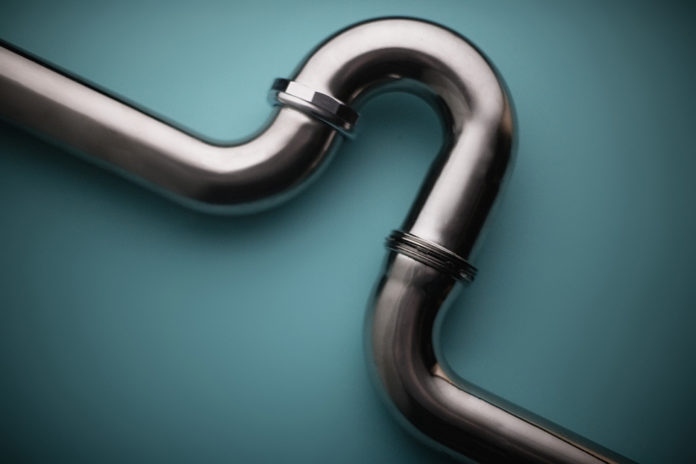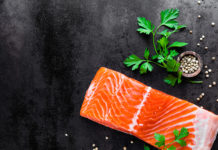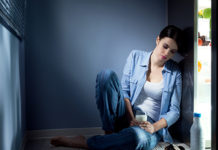
Seven simple steps to help ease the pain of IBD
By Dexter Brown
Celebrities may appear to live glamorous lives, however even they aren’t immune to the effects of inflammatory bowel disease (IBD). Amy Brenneman, star of Private Practice, Grey’s Anatomy and Judging Amy is a strong supporter of the Crohn’s and Colitis Foundation of America, and she struggled with ulcerative colitis for years before she finally decided to have surgery.
The disease is so common that it affects one in every 150 Canadians. According to Crohn’s and Colitis Canada, there are more than 10,200 new cases diagnosed in the country each year.
Crohn’s disease and ulcerative colitis are the two major kinds of IBD, and cases vary in severity. Crohn’s disease can affect any part of the gastrointestinal (GI) tract, but it is often found in the colon and the small intestine. Crohn’s occurs when small segments of inflammation occur throughout the gut from the inner layer to the outer lining of the gut.
On the other hand, ulcerative colitis affects parts of the colon, rectum and anus and usually inflames the inner lining of the bowel tissue. It typically starts at the rectum and works its way up through the colon causing a continuous stretch of inflammation.
IBD negatively affects the way the body absorbs nutrients and how it eliminates waste from the body. Those who suffer from IBD may have abdominal pain, bloating, cramping, diarrhea (sometimes bloody), fatigue, gas, weight loss and/or a decreased appetite.
Living with IBD
While Brenneman ultimately resorted to surgery, there are other ways to deal with IBD. Although there isn’t a cure for IBD, there are some dietary changes you can make that may put you into remission or at least reduce your symptoms. Toronto-based dietitian Doug Cook and author of The Complete Leaky Gut Health & Diet Guide shares seven tips for those who have been diagnosed with IBD and are dealing with a flare up.
- Monitor Your Fibre
Although we need fibre to move food through our digestive system, too much fibre can irritate your symptoms if you have IBD. While you shouldn’t eliminate fibre when you have a flare, it is a good idea to restrict certain types of fibre. “Things like wheat, bran and grains can be more problematic than certain fruits and vegetables [due to the type of fibre they contain],” says Cook. “The tolerance is highly individualized.”
If you’re having trouble eating some fruits and vegetables you can try cooking them instead of eating them raw. Steaming or baking your produce will make them easier to digest. Cook also suggests juicing, blending or even just peeling your fruits and vegetables.
To make sure you have the right amount of fibre in your diet, consult a dietitian or your family doctor.
❯ If a flare up is really bad you may want to temporarily drop cruciferous vegetables such as broccoli and cauliflower.
- Limit Sugar Intake
Cook recommends eliminating packaged fruit juice and restricting foods with added sugars. While sugar alcohols and white sugar are the worst offenders, you should also limit natural sugars like maple syrup, honey and the sugars in dried fruit. “Sugars can draw some fluid into the bowel and that could cause problems,” says Cook.
❯ Prunes should be avoided by people with IBD because of their high fibre and sugar alcohol content.
- Go Lactose-free
Consider swapping out cow’s milk for a lactose-free alternative. When it comes to other dairy products, however, you don’t have to be as vigilant. “Cheese and yogurt are naturally low in lactose because the natural bacteria breaks it down,” says Cook.
- Skip your Daily Coffee
Coffee can cause problems for those with IBD, particularly because it contains caffeine. While you may think you’re doing yourself a favour to drink decaffeinated coffee, it’s best to avoid all varieties of coffee during flares. “Coffee has dozens and dozens, if not hundreds, of organic acids,” Cook says. “So even if your coffee is caffeine-free, there can still be a problem during the flare. My advice would be to avoid coffee.”
In her book The IBD Healing Plan and Recipe Book, certified health coach, holistic nutritionist and Crohn’s disease survivor Christie A. Korth says that coffee can produce a laxative effect and stimulate rectosigmoid motor activity in as few as four minutes after consumption – even small amounts of coffee can produce loose stools. She recommends substituting coffee for tea or Teeccino, a herbal coffee supplement that gives drinkers the taste of coffee without its negative side effects.
Cook also says some other safe beverages for IBD suffers would include water, lactose-free milk, caffeine-free infusions or rice, hemp or almond beverages.
- Eat Anti-inflammatory Foods
There is good evidence that fish and fish oils can help with IBD because of the anti-inflammatory effects of omega-3 fatty acids. “Vitamin D is also anti-inflammatory, and it helps to modulate or temper the immune system,” says Cook. Part of the problem with a flare is that the immune system is attacking the tissue of the digestive tract so it helps to balance the immune system to keep it from being too over- or underactive.”
- Take a Multivitamin
A general multivitamin is a good idea because people with IBD typically have micronutrient deficiencies due to digestive tract damage that impairs digestion and absorption. “A multivitamin helps to bridge the gap if people aren’t absorbing or digesting foods properly,” Cook says.
- Consider going on a low FODMAP diet
FODMAP stands for Fermentable Oligosaccharides, Disaccharides, Monosaccharides And Polyols. “Low FODMAP diets have foods with carbohydrates that don’t ferment to the same degree, so they produce fewer symptoms like gas and bloating,” says Cook.
The Paleo Diet is an example of an eating plan that cuts out a lot of the FODMAP foods. Cook says to look for diets that get rid of potentially problematic foods like dairy with lactose, a lot of grains and some FODMAP-type sugars.













